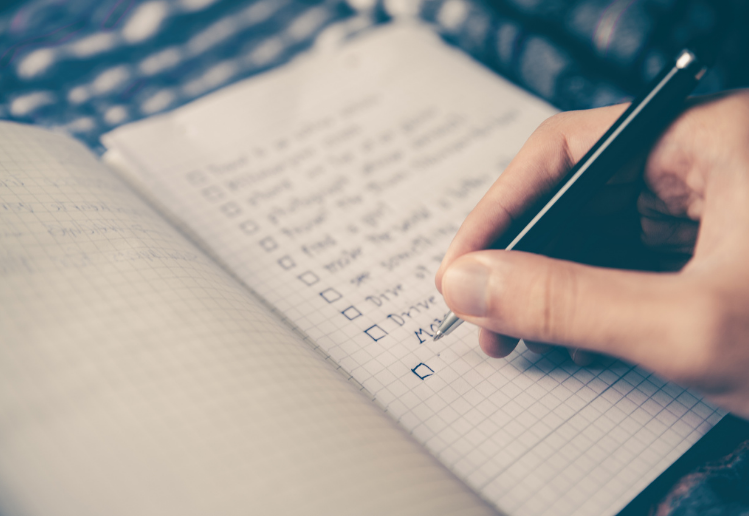You’ve written the most extraordinary piece of copy to get your point across, but great copywriting can often fail at the final hurdle. Don’t let your hard work go to waste; make sure your copy has everything it needs before hitting publish. You’ll ensure your work is seen by the right people and doesn’t negatively impact SEO or users.
Checklist before hitting publish
While writing is a passion, it needs structure and technique as well. Getting a blog post or any other piece of digital content live is more than just the text. Here’s a checklist of what to do before hitting publish a blog post, page or product,
Proof and Edit before publishing
While I thoroughly believe grammar and vocab are not the be-all and end-all of writing, information and tone are far superior; it’s still vital to check your work before going live. If your industry or sector relies on a professional look, then spelling and good grammar are an absolute must. So, having your work proofed thoroughly can ensure that the standard is kept high. But proofing isn’t just good from a simple spelling error perspective. It’s about making sure your content is readable and engaging. A good proofreader will make it legible, and a great editor will make it fascinating. Here are some ways to improve your blog writing skills.
Unique Page Title and SEO title
I frequently see incorrect formatting of page titles, duplicate titles, and boring titles! And we don’t do boring here. So here are some things to keep in mind when getting ready to publish.
- Is there a place to put a page title and an SEO title? If not, this needs to be rectified so you can make the most of your page. A page title is used on the actual page and ensures users know they have reached the right place and will know what to expect when they first land there. However, an SEO title is visible only on search engines; this makes it like a mini advert, so it needs to sell.
- If you do have a page and SEO title, are they duplicated? This is a common problem. Instead of copying, ensure the page title says exactly what the page is about and use the SEO title to advertise what your page is about. It sounds the same, but there is a subtle difference.
You can read more about how to write an SEO title here. This includes tone, correct length and how to utilise keywords.
Unique Meta Description with the correct length
Another common issue I find is meta descriptions that are not correctly formatted or duplicated. Here’s why these two issues cause problems for your SEO.
- Correctly formatted refers primarily to length. Your content will be cut off if you don’t keep within the search engine word limit. Formating can also refer to the readability (no emojis, uppercase SHOUTING or excessive punctuation) and tone.
- Duplicate descriptions on two or more pages also cause a problem because search engines cannot identify which page is more relevant to a user query. I often see this occurring when products or pages are duplicated to save time. This is fine, as long as everything is checked before making the new page live.
Read my guide on writing meta descriptions to better understand what format and content to use.
Vanity URL
A URL is a small but still influential part of a good user experience. Pages should preferably use vanity URLs. A vanity URL is one that a human can read and understand. Only use words or numbers (in context) instead of complicated strings of numbers and jumbled letters. URLs should also not be too long, making them difficult for users to read. The structure of your URL should always be focused on what is best for users; then search engines will reward you accordingly.
Check out my complete guide on URL structures for SEO for how to make them work for your website.
Features An Image
Visual content should be included in all pieces of copy. Having at least one image can boost engagement rates and reading time. But it’s not just about putting a pretty picture in and forgetting it. You need to make sure it works for both consumers and search engines. Here are a few pointers.
- The image needs to be the right size for loading. If your website is using huge images, it’s going to take longer to load them, which can damage your SEO. Compress images, so they are not taking up valuable bandwidth when trying to load.
- The correct dimensions, as with the above, ensure images are the right size for where they are placed as it can improve the speed of your site. It can also ensure that the user sees the image without distortion.
- Having an alt tag. Alt tags are a vital way to provide users and SEs with information about the image used. This is essential to help visually impaired users access information plus SEs’ll highly reward you if you fill them in line with your SEO strategy.
Read my guide on how to optimise images for SEO for more detail about all of these pointers.
Get Help With Your Content Marketing
If you often forget to do these tasks or aren’t sure how to complete them, get in touch. Not only do I provide full SEO content strategy and writing, but I also offer a full implementation service. Check out my SEO and content services here, or view my case studies to find out how I work. Let me help your business grow while you focus on the day to day.

